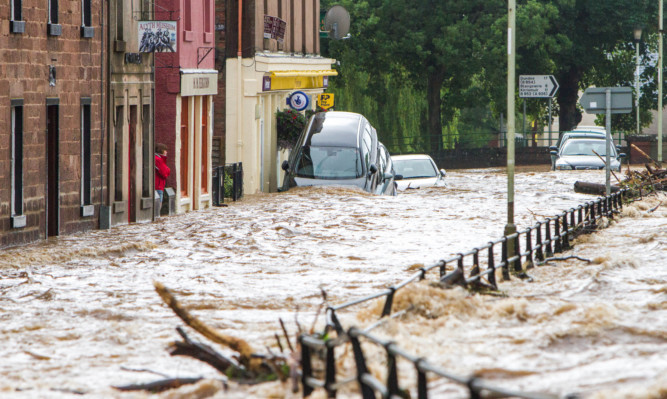Flooding is likely to become more frequent and severe in Scotland as a result of climate change, according to a new report.
Research for the Scottish Government found more than 108,000 homes are currently estimated to be exposed to flooding.
Falkirk, the Orkney Islands and West Dunbartonshire council areas have the highest proportion of residential properties exposed to coastal flooding while river flooding is most prevalent in Perth and Kinross, Stirling, the Scottish Borders and Moray.
The report states: “Climate change is likely to exacerbate the frequency and severity of flooding in Scotland.
“The UK Climate Projections data indicates that rising sea levels, increases in winter rainfall and more days of heavy rainfall will affect Scotland.”
The report highlighted some groups such as older people and those on low incomes or in poor health are disproportionally affected by extreme weather.
It called for councils to work with voluntary and community organisations to develop the support networks available for those affected by flooding, particularly in remote rural and inner city areas.
Environment minister Dr Aileen McLeod said: “This report highlights that the changing climate is increasing the risk of flooding for a number of Scottish communities.
“Identifying and understanding why some neighbourhoods are more flood disadvantaged than others is essential to help us plan and target the right support to communities at flood risk.
“These findings will be used by a variety of organisations – from local authorities to community resilience groups – to raise awareness of flood risks and decide how to act.
“The importance the Scottish Government attaches to this issue is demonstrated by our continued support for funding for flood schemes and the additional £4 million for the local authorities worst-hit by Storm Desmond and flooding earlier this year.”
WWF Scotland director Lang Banks said: “Although we have become much better at preventing homes from being built in flood-prone areas, climate change means that more existing properties will start to be at risk from flooding.
“So, while it’s right that steps are taken now to protect the homes most at risk from flooding, in the longer-term the best insurance policy to head off the worst of the danger is to reduce the emissions which are changing our climate.”
